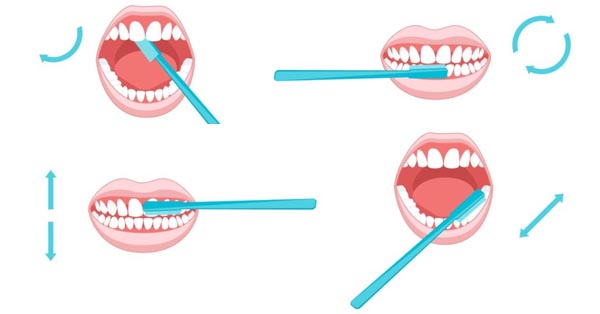
Maintaining good oral hygiene is essential for overall health and well-being, and proper tooth brushing is a cornerstone of any effective oral care routine. While brushing your teeth may seem like a straightforward task, there are specific techniques and best practices that can significantly impact the health of your teeth and gums. In this comprehensive guide, we’ll delve into everything you need to know about brushing your teeth properly, covering techniques, tools, and tips for achieving optimal oral hygiene.
Understanding the Importance of Proper Tooth Brushing:
Before we dive into the specifics of how to brush your teeth properly, let’s first explore why it’s so important:
- Plaque Removal: Brushing your teeth helps to remove plaque, a sticky film of bacteria that forms on the surface of your teeth. If left unchecked, plaque can lead to tooth decay, gum disease, and other oral health problems.
- Prevention of Cavities: Regular brushing helps to remove food particles and bacteria from your teeth, reducing the risk of cavities and tooth decay.
- Gum Health: Proper brushing can help to prevent gum disease by removing plaque and bacteria from along the gumline.
- Fresh Breath: Brushing your teeth removes food particles and bacteria that can cause bad breath, leaving your mouth feeling clean and fresh.
Choosing the Right Toothbrush:
Before you can start brushing your teeth properly, you’ll need to choose the right toothbrush. Here are some factors to consider:
- Bristle Type: Opt for a toothbrush with soft bristles, as they are gentle on your teeth and gums and are less likely to cause damage.
- Size and Shape: Choose a toothbrush with a small head and a comfortable handle that allows you to reach all areas of your mouth easily.
- Manual vs. Electric: Both manual and electric toothbrushes can be effective for cleaning your teeth. Choose the option that feels most comfortable and allows you to brush thoroughly.
Proper Tooth Brushing Techniques:
Now, let’s explore the step-by-step process of brushing your teeth properly:
- Choose the Right Toothpaste: Select a fluoride toothpaste that is approved by dental professionals for effectively cleaning your teeth and protecting against cavities.
- Wet Your Toothbrush: Before applying toothpaste, wet your toothbrush with water to help activate the toothpaste and make it easier to spread.
- Apply Toothpaste: Squeeze a pea-sized amount of toothpaste onto your toothbrush. Avoid using too much toothpaste, as this can lead to excess foaming and may be abrasive to your teeth and gums.
- Position Your Toothbrush: Hold your toothbrush at a 45-degree angle to your gums, with the bristles pointing toward your gumline.
- Brush Gently: Using gentle, circular motions, brush the outer surfaces of your teeth, paying close attention to the gumline. Be sure to brush each tooth individually, moving from one tooth to the next.
- Clean the Inner Surfaces: Angle your toothbrush vertically to reach the inner surfaces of your teeth, and brush using the same gentle, circular motions.
- Brush the Chewing Surfaces: Use back-and-forth motions to brush the chewing surfaces of your molars, where food particles are most likely to become trapped.
- Brush Your Tongue: Don’t forget to gently brush your tongue to remove bacteria and freshen your breath.
- Rinse Thoroughly: After brushing, rinse your mouth thoroughly with water to remove any remaining toothpaste and debris.
- Replace Your Toothbrush: Replace your toothbrush every three to four months, or sooner if the bristles become frayed or worn.
Additional Tips for Proper Tooth Brushing:
- Brush Twice a Day: Aim to brush your teeth at least twice a day, ideally in the morning and before bedtime, to remove plaque and bacteria from your teeth and gums.
- Use Fluoride Mouthwash: Consider incorporating a fluoride mouthwash into your oral care routine to help strengthen your tooth enamel and prevent cavities.
- Don’t Rush: Take your time when brushing your teeth, and be thorough to ensure that you’re effectively removing plaque and bacteria from all surfaces of your teeth.
- Don’t Forget Your Dentist: In addition to brushing your teeth at home, be sure to visit your dentist regularly for professional cleanings and check-ups to maintain optimal oral health.
Conclusion:
Proper tooth brushing is a fundamental aspect of maintaining good oral hygiene and overall health. By choosing the right toothbrush, using the correct brushing techniques, and incorporating additional oral care practices into your routine, you can achieve optimal oral health and a bright, healthy smile. Remember to brush gently, thoroughly, and consistently to keep your teeth and gums clean and free of plaque and bacteria. With these tips and techniques in mind, you’ll be well on your way to a lifetime of healthy smiles and confident oral hygiene.